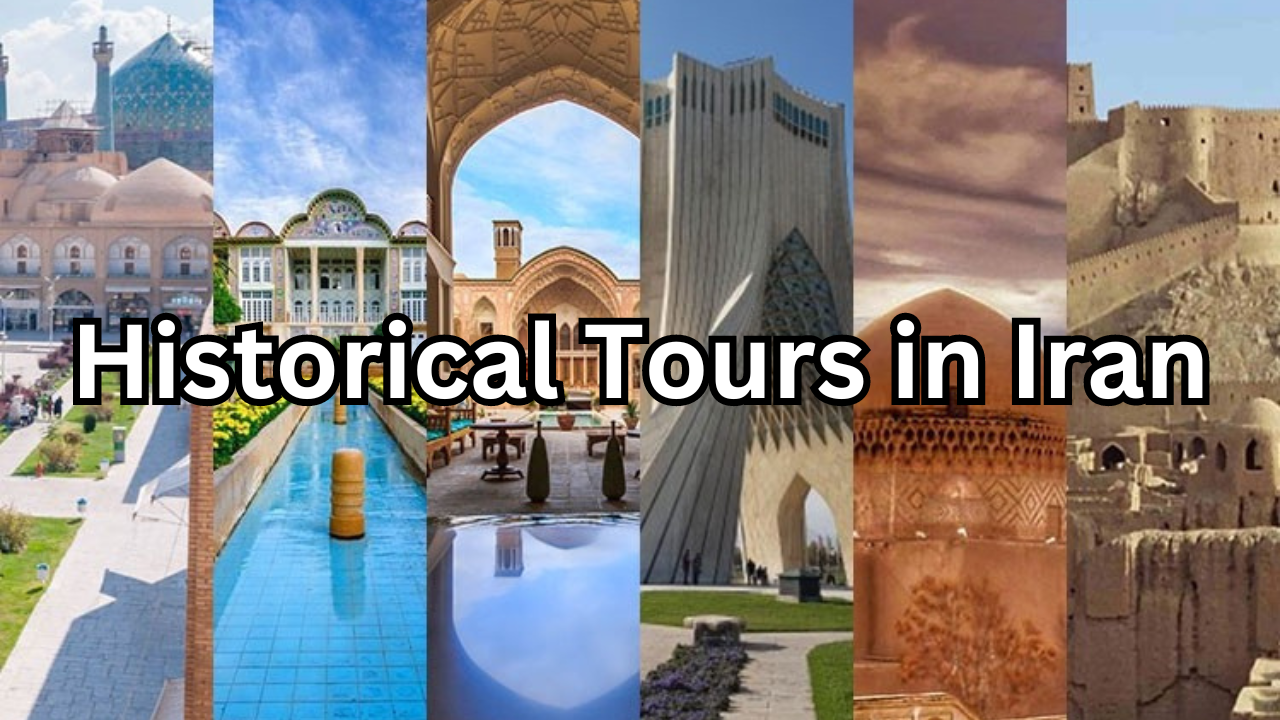Table of Contents
Introduction:
Iran, with its millennia-old history and vibrant cultural heritage, offers a treasure trove of historical sites that attract tourists and history enthusiasts from around the world. From the ancient ruins of Persepolis to the exquisite mosques of Isfahan, each corner of Iran is steeped in history, reflecting the country’s rich tapestry of civilizations, religions, and cultures. Historical tours in Iran provide a unique opportunity to delve deep into the past, uncovering the legacies of empires, the contributions of scholars and poets, and the architectural marvels that stand as testaments to bygone eras.
In this exploration of historical tours in Iran, we will journey through the key cities and regions that encapsulate the country’s historical significance. From the bustling streets of Tehran to the serene gardens of Kashan, each destination offers a distinct perspective on Iran’s heritage, allowing travelers to connect with its ancient roots and modern-day influences. Join us on this immersive journey as we unravel the layers of history that define Iran’s cultural identity.
Brief Overview of Historical Tours in Iran:
Iran in Asia, formerly known as Persia, boasts a remarkable historical and cultural heritage that spans thousands of years. It is home to some of the world’s oldest civilizations, including the Elamite, Achaemenid, Parthian, and Sassanian empires, which left behind a legacy of magnificent architecture, art, and literature. The country’s strategic location along the ancient Silk Road facilitated cultural exchanges and trade, further enriching its heritage.
Iran’s cultural diversity is evident in its myriad traditions, languages, and ethnic groups, each contributing to the nation’s colorful tapestry. Persian culture, with its poetry, music, and exquisite handicrafts, has had a profound impact on the region and beyond. The influence of Zoroastrianism, Islam, and other religions is woven into Iran’s social fabric, manifesting in sacred sites, religious practices, and festivals that reflect spiritual beliefs and customs.
Importance of Historical Tours in Understanding Iran’s Past:
Historical tours play a crucial role in unraveling Iran’s complex and storied past. They offer a firsthand experience of ancient sites, monuments, and artifacts, allowing visitors to witness the tangible remnants of bygone eras. By exploring archaeological wonders like Persepolis, Pasargadae, and Isfahan’s grand mosques, travelers can appreciate the architectural achievements and historical significance of these landmarks.
Moreover, historical tours provide insights into Iran’s cultural evolution, highlighting the interplay between different civilizations, dynasties, and cultural movements. They showcase how traditions have endured or evolved over time, fostering a deeper understanding of Iran’s identity and resilience amidst historical upheavals.
Additionally, historical tours promote cultural exchange and dialogue, fostering mutual understanding and appreciation among diverse communities. They help bridge gaps in knowledge and dispel misconceptions, fostering a more nuanced and inclusive perspective of Iran’s history and heritage.
In essence, historical tours serve as gateways to the past, unlocking stories of triumphs, challenges, and enduring legacies that shape Iran’s cultural landscape and contribute to the global tapestry of human civilization.
Persepolis and Pasargadae Tour
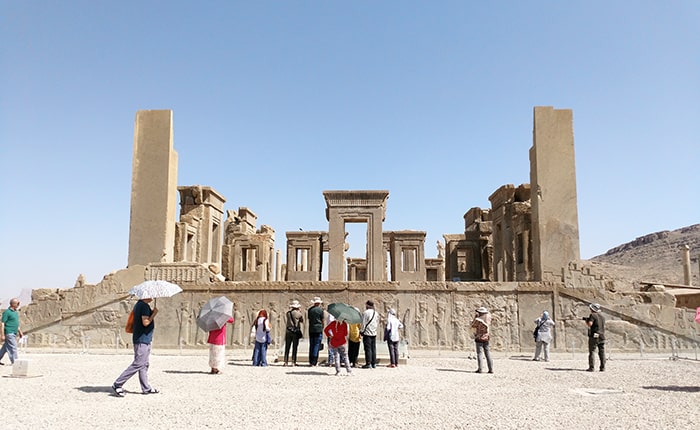
The Persepolis and Pasargadae tour offers a captivating journey into the heart of ancient Iran, where the remnants of the mighty Achaemenid Empire stand as testament to a bygone era of grandeur and power. Persepolis, the jewel of this tour, was once the opulent capital of Persia, where kings and emperors held magnificent ceremonies and built monumental structures to showcase their wealth and authority.
The tour begins at Persepolis, a UNESCO World Heritage site renowned for its stunning archaeological remains. Visitors are transported back in time as they walk through the Gate of All Nations, adorned with intricately carved reliefs depicting Persian nobility and tribute-bearing subjects. The grandeur of the Apadana Palace, with its colossal columns and intricate stone carvings, leaves a lasting impression of the empire’s architectural prowess.
As the tour continues, travelers explore the royal tombs and rock-cut reliefs at Naqsh-e Rustam, a necropolis housing the final resting places of Achaemenid kings. The imposing tomb of King Darius I, carved into the cliffside at Naqsh-e Rustam, is a highlight, showcasing the ancient artistry and engineering skills of the era.
Next, the tour ventures to Pasargadae, the ancient capital founded by Cyrus the Great. Here, visitors encounter the enigmatic Tomb of Cyrus, a modest yet awe-inspiring monument that symbolizes the legacy of one of history’s most renowned rulers. The Pasargadae complex also features the Audience Hall and the Gatehouse, offering insights into the architectural sophistication of early Persian civilization.
Throughout the tour, knowledgeable guides provide historical context and anecdotes, bringing to life the stories of kings, conquests, and cultural exchange that shaped ancient Persia. Visitors gain a deeper appreciation for the Achaemenid Empire’s contributions to art, governance, and urban planning, as well as its enduring impact on subsequent Persian dynasties.
The Persepolis and Pasargadae tour is not merely a journey through ruins but a voyage into the soul of Iran’s rich history. It invites travelers to unravel the mysteries of a lost empire, marvel at architectural marvels, and contemplate the enduring legacy of a civilization that shaped the course of world history.
Description of Persepolis as the ancient capital of the Achaemenid Empire:
Persepolis stands as a timeless testament to the glory and grandeur of the Achaemenid Empire, one of the most influential civilizations of the ancient world. Situated in modern-day Iran, Persepolis served as the ceremonial capital where kings of the Achaemenid dynasty held magnificent gatherings, received tributes from subject nations, and showcased the empire’s wealth and power.
The city’s origins date back to the reign of Darius I in the 6th century BCE, who initiated the construction of the monumental complex. Persepolis was not only a political center but also a symbol of cultural exchange, as evidenced by the diverse architectural styles and artistic motifs influenced by Persian, Mesopotamian, and Egyptian traditions.
Highlights of Persepolis, including ceremonial palaces and ruins:
Persepolis mesmerizes visitors with its impressive array of ceremonial palaces, grand staircases, and intricately decorated structures. Among the highlights of Persepolis are:
- The Gate of All Nations: A majestic entrance adorned with colossal winged-bull sculptures and reliefs depicting delegations from various nations paying homage to the Achaemenid king.
- The Apadana Palace: A vast audience hall supported by towering columns, adorned with reliefs showcasing scenes of royal receptions and tribute-bearing processions.
- The Throne Hall (Tachara): A smaller but intricately decorated palace believed to have been used for private audiences and royal ceremonies.
- The Hundred-Column Hall (Hall of Xerxes): A monumental hall with rows of columns, likely used for official gatherings and administrative purposes.
- The Treasury: A building thought to have housed the empire’s wealth and precious artifacts, now represented by its impressive ruins.
Pasargadae visit, focusing on Cyrus the Great’s tomb and nearby archaeological sites:
Pasargadae, located near Persepolis, holds profound historical significance as the first capital of the Achaemenid Empire and the resting place of its founder, Cyrus the Great. The visit to Pasargadae typically includes:
- The Tomb of Cyrus: A simple yet dignified tomb structure believed to hold the mortal remains of Cyrus the Great. Its design reflects the humility and respect accorded to this legendary ruler.
- The Audience Palace (Audience Hall): A large structure with impressive stone columns and architectural elements, possibly used for official ceremonies and receptions.
- The Gatehouse: A monumental gateway leading to the heart of Pasargadae, adorned with ornate carvings and symbols representing the Achaemenid dynasty.
- The Cyrus Cylinder: An important artifact discovered in Babylon, which bears inscriptions regarding Cyrus the Great’s policies of religious tolerance and governance.
The Pasargadae visit provides a deeper understanding of Cyrus the Great’s legacy as a visionary leader and sheds light on the early foundations of the Achaemenid Empire, complementing the experience of exploring Persepolis and unraveling the rich history of ancient Persia.
Isfahan Historical Tour
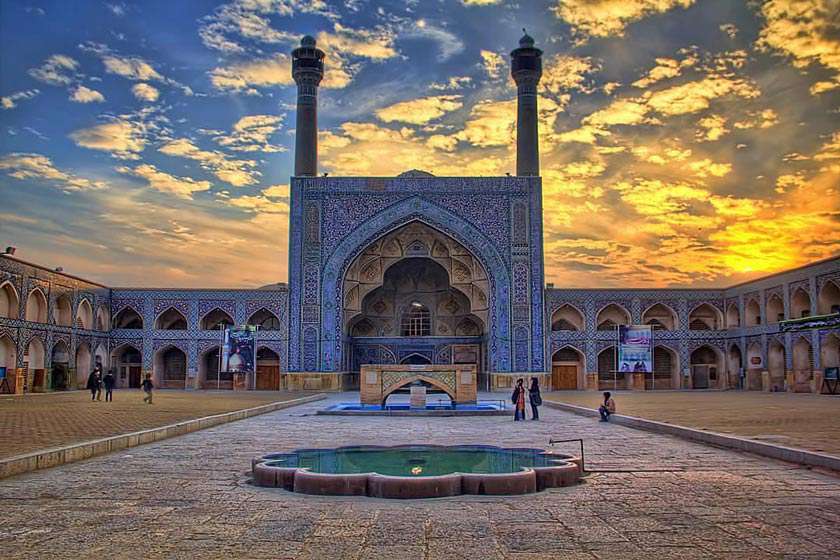
Embarking on an Isfahan historical tour is akin to stepping into a living museum, where the echoes of centuries past resonate through magnificent architectural wonders and cultural landmarks. Isfahan, often referred to as “Half of the World” due to its grandeur and significance, boasts a rich tapestry of history, art, and heritage. At the heart of the tour lies Naqsh-e Jahan Square, a UNESCO World Heritage site and one of the largest squares in the world, surrounded by architectural masterpieces like the Imam Mosque with its iconic turquoise tiles and the intricate Sheikh Lotfollah Mosque, renowned for its exquisite dome and delicate designs. A stroll through the historic bazaar, a labyrinth of bustling alleys and artisan workshops, offers a glimpse into Isfahan’s vibrant trade and craftsmanship traditions. The tour also unveils the grandeur of the Chehel Sotoun Palace, reflecting the Safavid dynasty’s artistic prowess with its mirrored halls and lush gardens. Each step in Isfahan unveils layers of history, showcasing the city’s role as a cultural crossroads and a testament to Persian ingenuity and creativity.
Introduction to Isfahan’s Significance as a Cultural and Historical Hub:
Isfahan, nestled in the heart of Iran, stands as a testament to centuries of cultural, artistic, and architectural brilliance. Revered as one of the most historically significant cities in the country, Isfahan served as the capital of Persia during the Safavid dynasty, a golden era marked by flourishing arts, trade, and religious tolerance. Its strategic location on the ancient Silk Road facilitated cultural exchanges and attracted scholars, artisans, and merchants from far and wide, enriching the city’s cultural tapestry. Today, Isfahan remains a vibrant center of Persian heritage, captivating visitors with its splendid monuments, bustling bazaars, and hospitable ambiance.
Exploration of Naqsh-e Jahan Square, Imam Mosque, and Sheikh Lotfollah Mosque:
The Isfahan historical tour embarks on a captivating exploration of Naqsh-e Jahan Square, a UNESCO World Heritage site and the centerpiece of the city’s architectural splendor. Encircled by monumental structures, the square epitomizes the grandeur of Safavid urban planning and artistic expression. The tour delves into the awe-inspiring Imam Mosque, adorned with intricate tilework, soaring minarets, and a vast courtyard that echoes with centuries of prayers and devotion. Nearby, the Sheikh Lotfollah Mosque captivates with its mesmerizing dome, an architectural marvel showcasing Persian craftsmanship and mathematical precision in design.
Visit to Chehel Sotoun Palace and Other Notable Landmarks in Isfahan:
The journey through Isfahan’s historical treasures continues with a visit to the enchanting Chehel Sotoun Palace, a symphony of mirrored halls, lush gardens, and frescoed walls that reflect the opulence and refinement of the Safavid court. Here, travelers immerse themselves in the rich history and artistic heritage of Persia, discovering tales of royal banquets, diplomatic receptions, and cultural festivities.
Additionally, the tour unveils other notable landmarks such as the picturesque Khaju Bridge, a masterpiece of Persian bridge architecture adorned with exquisite tilework and pavilions. The vibrant Isfahan Bazaar beckons with its bustling atmosphere and diverse array of handicrafts, carpets, and spices, offering a glimpse into the city’s vibrant trade legacy.
Each stop on the Isfahan historical tour unveils layers of history, artistry, and cultural significance, inviting travelers to delve into the soul of Persia and experience the timeless allure of this captivating city.
Shiraz Cultural Tour
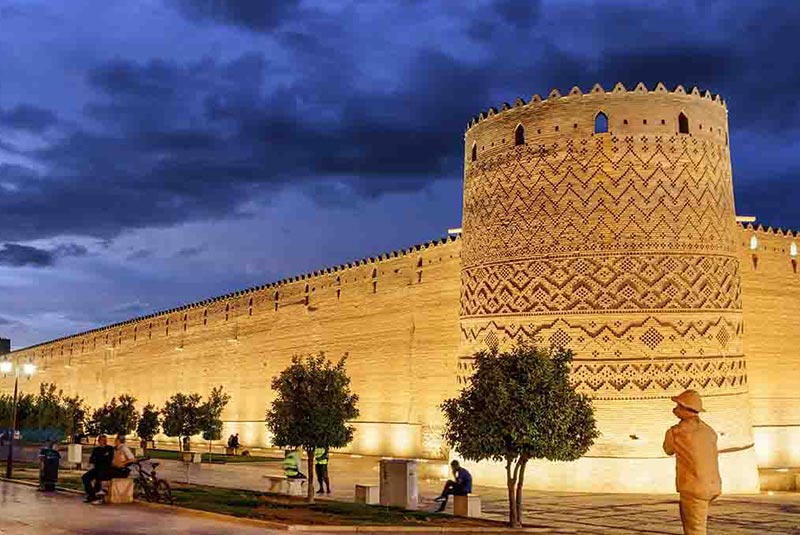
Embarking on a Shiraz cultural tour is akin to delving into the poetic heart of Iran, where the fragrance of gardens mingles with the echoes of ancient wisdom. Shiraz, known as the city of poets, gardens, and nightingales, holds a unique place in Iran’s cultural tapestry. Renowned for its rich history, exquisite architecture, and vibrant arts scene, Shiraz captivates visitors with its blend of tradition and modernity.
The cultural tour of Shiraz begins with a visit to the UNESCO-listed Eram Garden, a paradise of blooming flowers, flowing streams, and centuries-old cypress trees. Here, travelers immerse themselves in the beauty and serenity that has inspired poets and scholars for generations.
Next, the tour ventures to the enchanting Nasir al-Mulk Mosque, affectionately known as the Pink Mosque for its stunning array of colorful stained glass windows that cast a mesmerizing kaleidoscope of light and shadow. This architectural gem showcases the intricate tilework and craftsmanship that define Persian Islamic art.
No visit to Shiraz is complete without paying homage to its literary legacy at the Tomb of Hafez, the revered 14th-century Persian poet. The tranquil gardens surrounding the tomb provide a serene setting for reflection and appreciation of Hafez’s timeless verses, which continue to resonate with readers worldwide.
The tour also explores the historic Vakil Bazaar, a bustling marketplace brimming with handicrafts, spices, textiles, and traditional Persian goods. Wander through its labyrinthine alleys, adorned with vaulted ceilings and mosaic tilework, to experience the vibrant pulse of Shiraz’s commercial and cultural life.
Additionally, travelers have the opportunity to discover the architectural marvels of Shiraz, including the imposing Arg of Karim Khan, a citadel built during the Zand dynasty, and the exquisite Narenjestan-e Qavam, a Qajar-era mansion adorned with intricate stucco, mirror work, and painted ceilings.
Throughout the Shiraz cultural tour, knowledgeable guides provide insights into the city’s rich history, artistic heritage, and cultural traditions, offering a comprehensive and immersive experience that celebrates the soulful essence of this captivating city in southern Iran.
Overview of Shiraz as a City Known for Poets, Gardens, and Historical Sites:
Shiraz, nestled in the picturesque foothills of Iran’s Zagros Mountains, is a city steeped in poetry, adorned with gardens, and adorned with historical riches. Renowned as the birthplace of some of Persia’s greatest poets, including Hafez and Saadi, Shiraz has long been celebrated as a cultural haven where literature and art flourish. Its lush gardens, such as the famed Eram Garden, are not only paradises of beauty but also reflections of the city’s deep-rooted love for nature and aesthetics. Moreover, Shiraz’s historical sites, from ancient citadels to magnificent mosques, bear witness to its rich heritage and the influences of various dynasties that once ruled this enchanting city.
Highlights such as Eram Garden, Nasir al-Mulk Mosque, and the Tomb of Hafez:
The Shiraz cultural tour unveils a tapestry of enchanting highlights that showcase the city’s poetic and historical charm. Eram Garden, with its centuries-old trees, flowing water channels, and fragrant flowers, offers a serene retreat where visitors can immerse themselves in the beauty that inspired generations of poets and artists.
The tour then leads to the mesmerizing Nasir al-Mulk Mosque, also known as the Pink Mosque, a masterpiece of Persian Islamic architecture adorned with intricate tilework and stunning stained glass windows. The interplay of light and color within the mosque creates a magical ambiance that captivates all who enter.
No visit to Shiraz is complete without a pilgrimage to the Tomb of Hafez, the revered 14th-century poet whose lyrical verses continue to resonate with readers worldwide. The tranquil surroundings of the tomb and its lush gardens provide a serene setting for contemplation and appreciation of Hafez’s timeless poetry.
Exploration of Vakil Bazaar and Other Cultural Attractions in Shiraz:
The cultural tour of Shiraz delves into the bustling heart of the city at Vakil Bazaar, a vibrant marketplace where artisans and traders have gathered for centuries. The bazaar’s narrow alleys are adorned with traditional Persian architecture, intricate tilework, and a kaleidoscope of goods, from spices and textiles to handicrafts and jewelry, offering a sensory feast for visitors.
Additionally, the tour may include visits to other cultural attractions in Shiraz, such as the imposing Arg of Karim Khan, a fortified citadel from the Zand dynasty, and the Narenjestan-e Qavam, a splendid Qajar-era mansion showcasing exquisite Persian design and craftsmanship.
Through these cultural explorations, visitors gain a deeper understanding of Shiraz’s multifaceted identity as a city of poets, gardens, and historical wonders, where the past and present merge harmoniously to create an unforgettable experience for travelers.
Yazd Ancient City Tour
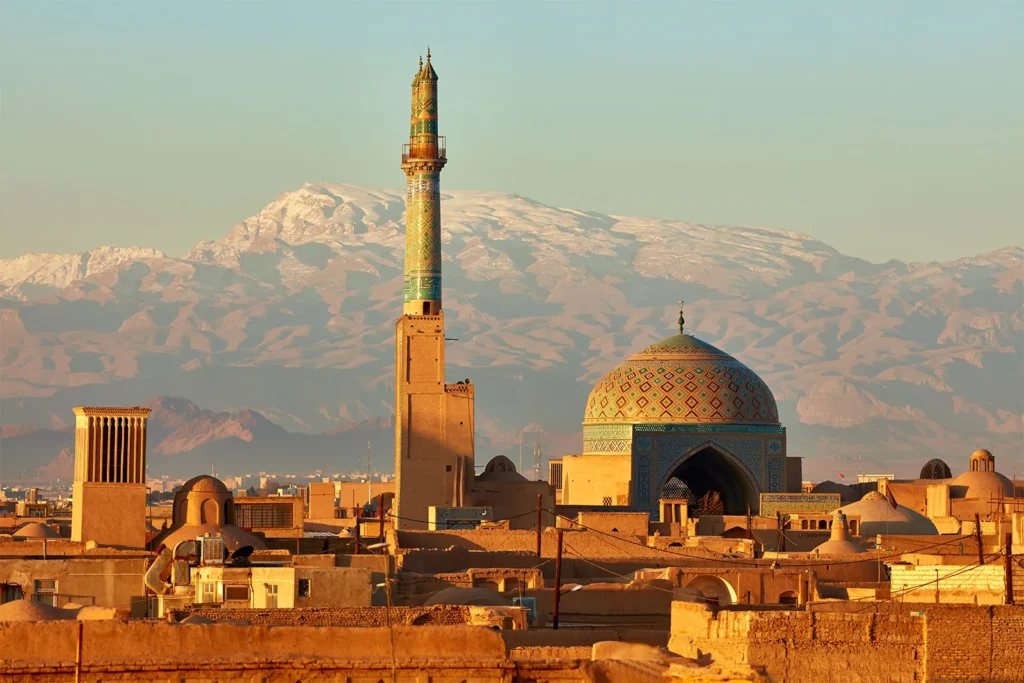
The Yazd Ancient City Tour is a captivating journey through time, offering a glimpse into the rich history, unique architecture, and cultural heritage of one of Iran’s oldest inhabited cities. Yazd, known for its ancient mud-brick buildings, windcatchers, and Zoroastrian heritage, stands as a living testament to centuries of human civilization and ingenuity.
The tour begins with a visit to the Jameh Mosque of Yazd, a masterpiece of Persian-Islamic architecture dating back to the 12th century. The mosque’s intricate tilework, soaring minarets, and peaceful courtyard reflect the city’s deep-rooted Islamic heritage and artistic craftsmanship.
Next, travelers explore the Amir Chakhmaq Complex, an iconic structure adorned with symmetrical rows of alcoves, dating back to the 15th century. The complex includes a mosque, a caravanserai, and a prominent facade that serves as a symbol of Yazd’s cultural and religious diversity.
A highlight of the Yazd Ancient City Tour is the Zoroastrian Fire Temple, where the eternal flame has been burning for over 1,500 years, symbolizing the ancient faith’s enduring presence in Yazd. Visitors can learn about Zoroastrianism, its rituals, and its significance in Iranian history and culture.
The tour also ventures into the historic Fahadan neighborhood, characterized by its narrow alleys, traditional adobe houses, and windcatchers (badgirs) that harness natural ventilation—a testament to the city’s architectural ingenuity in adapting to its desert environment.
A visit to the Yazd Water Museum offers insights into the city’s innovative qanat system, an ancient underground irrigation system that has sustained Yazd’s inhabitants for centuries. The museum showcases the engineering marvels and water management techniques employed by past generations.
Additionally, travelers can explore the atmospheric alleys of the Yazd Old Town, discovering hidden gems like the Alexander’s Prison, the Dowlat Abad Garden with its iconic windtower, and the historic Khan-e Lari House, a beautifully preserved example of traditional Persian residential architecture.
Throughout the Yazd Ancient City Tour, knowledgeable guides share fascinating stories, legends, and historical anecdotes, providing a deeper understanding of Yazd’s significance as a cultural crossroads, a center of craftsmanship, and a bastion of ancient wisdom in the heart of Iran’s desert landscape.
Introduction to Yazd’s Ancient Mud-Brick Architecture and Historical Significance:
Yazd, with its enchanting ancient mud-brick architecture, stands as a testament to the ingenuity and resilience of its inhabitants throughout history. Situated in the heart of Iran’s central desert region, Yazd’s distinctive buildings, including windcatchers (badgirs) and narrow alleyways, reflect centuries of adaptation to the desert climate. This city’s historical significance is deeply rooted in its role as a center of Zoroastrianism, one of the world’s oldest monotheistic religions, making it a living museum of cultural heritage and architectural innovation.
Visits to Jameh Mosque of Yazd, Amir Chakhmaq Complex, and Zoroastrian Fire Temple:
The Yazd Ancient City Tour takes travelers on a fascinating journey through some of the city’s most iconic landmarks. The Jameh Mosque of Yazd, dating back to the 12th century, showcases exquisite Persian-Islamic architecture with its intricate tilework, soaring minarets, and peaceful courtyard—a testament to Yazd’s rich Islamic heritage.
The tour also includes a visit to the Amir Chakhmaq Complex, a striking ensemble of structures featuring symmetrical rows of alcoves, a mosque, and a caravanserai. This complex, dating back to the 15th century, serves as a prominent symbol of Yazd’s cultural and religious diversity.
A highlight of the tour is the Zoroastrian Fire Temple, where visitors can witness the eternal flame that has been burning for centuries, symbolizing the enduring presence of Zoroastrianism in Yazd. The temple offers insights into the ancient faith, its rituals, and its role in shaping Yazd’s cultural identity.
Tour of Yazd Water Museum and Exploration of the City’s Winding Lanes:
The Yazd Ancient City Tour continues with a visit to the Yazd Water Museum, which provides a fascinating look into the city’s innovative qanat system—an ancient underground irrigation system that has sustained Yazd’s inhabitants for centuries. The museum showcases the engineering marvels and water management techniques employed by past generations, highlighting the city’s ingenuity in managing water resources in a desert environment.
Exploration of Yazd’s winding lanes is an integral part of the tour, offering glimpses into the city’s traditional neighborhoods, adobe houses, and intricate alleyway networks. Travelers can immerse themselves in the atmospheric charm of Yazd’s Old Town, discovering hidden gems, traditional handicrafts, and local culture along the way.
Overall, the Yazd Ancient City Tour provides a comprehensive and immersive experience, allowing travelers to appreciate the city’s ancient architecture, cultural heritage, and unique way of life that has endured for centuries in this desert oasis.
Tehran Historical Sites Tour
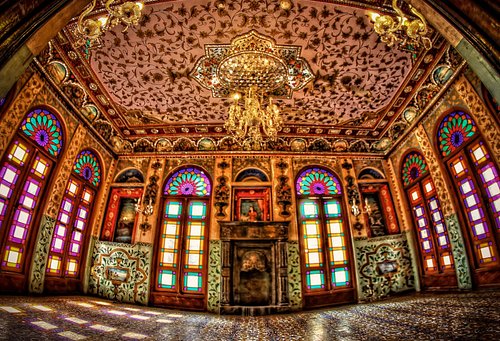
The Tehran Historical Sites Tour is a captivating journey through Iran’s vibrant capital, offering a glimpse into the country’s rich history, cultural heritage, and architectural marvels. Tehran, a bustling metropolis nestled against the Alborz Mountains, is not only the political and economic hub of Iran but also a treasure trove of historical sites that showcase the nation’s diverse past.
The tour begins with a visit to the Golestan Palace, a UNESCO World Heritage site and a masterpiece of Persian architecture. Dating back to the Qajar era, the palace complex features stunning gardens, intricately decorated halls, and the iconic Marble Throne, providing insight into the opulent lifestyle of Persian royalty.
Next, travelers explore the National Museum of Iran, home to an extensive collection of artifacts spanning Iran’s prehistoric, ancient, and Islamic periods. From ancient pottery and sculptures to intricate textiles and manuscripts, the museum offers a comprehensive overview of Iran’s archaeological treasures and cultural heritage.
The tour then takes visitors to the Niavaran Palace Complex, a series of royal residences and gardens that served as the summer retreat for Iran’s last monarch, Mohammad Reza Shah Pahlavi. The complex showcases a blend of traditional Persian architecture and modern influences, providing a glimpse into Iran’s recent history.
Additionally, travelers have the opportunity to explore the Sa’dabad Complex, a vast estate comprising palaces, museums, and gardens. This former royal residence offers insights into the lives of Iran’s rulers and their contributions to art, culture, and governance.
No Tehran Historical Sites Tour would be complete without a visit to the bustling Grand Bazaar, a labyrinthine marketplace where centuries-old traditions of trade and craftsmanship thrive. Here, visitors can immerse themselves in the sights, sounds, and scents of Tehran’s vibrant commercial life, browsing through a myriad of goods, from carpets and spices to handicrafts and jewelry.
Throughout the tour, knowledgeable guides provide historical context, anecdotes, and fascinating stories, allowing travelers to gain a deeper understanding of Tehran’s evolution from a historic city to a modern metropolis while appreciating the enduring legacy of Iran’s rich cultural heritage.
Description of Tehran as the Capital and Its Historical Landmarks:
Tehran, the bustling capital of Iran, is a dynamic metropolis that blends modernity with a rich historical heritage. As the political, economic, and cultural heart of the country, Tehran boasts a diverse array of historical landmarks that reflect Iran’s multifaceted past. From ancient palaces and museums to vibrant bazaars and cultural sites, Tehran offers a captivating journey through time.
Visit to Golestan Palace, National Museum of Iran, and Niavaran Palace Complex:
The Tehran Historical Sites Tour commences with a visit to the magnificent Golestan Palace, a UNESCO World Heritage site and a jewel of Persian architecture. Dating back to the Qajar era, the palace complex showcases opulent halls, beautiful gardens, and exquisite tilework, providing a glimpse into Iran’s royal history and artistic achievements.
Next on the tour is the National Museum of Iran, home to a vast collection of artifacts spanning thousands of years of Iranian history. From prehistoric relics and ancient sculptures to Islamic art and manuscripts, the museum offers a comprehensive overview of Iran’s cultural heritage and archaeological treasures.
The tour also includes a visit to the Niavaran Palace Complex, a series of royal residences nestled in lush gardens. This former summer retreat of Iran’s last monarch, Mohammad Reza Shah Pahlavi, combines traditional Persian architecture with modern elements, offering insights into Iran’s recent history and royal lifestyle.
Exploration of Sa’dabad Complex, Grand Bazaar, and Other Cultural Sites in Tehran:
The Tehran Historical Sites Tour continues with a tour of the sprawling Sa’dabad Complex, a former royal estate comprising palaces, museums, and verdant gardens. Visitors can explore the lavish interiors of the palaces, learn about Iran’s monarchy, and enjoy the serene atmosphere of the surrounding parklands.
No visit to Tehran is complete without experiencing the vibrant Grand Bazaar, a bustling marketplace that has been a center of trade and commerce for centuries. Here, travelers can wander through labyrinthine alleys, haggle for Persian rugs, spices, handicrafts, and immerse themselves in the sights, sounds, and aromas of Tehran’s bustling commercial life.
Additionally, the tour may include visits to other cultural sites in Tehran, such as the Tehran Museum of Contemporary Art, the Azadi Tower, and the Milad Tower, providing a comprehensive exploration of the city’s rich cultural tapestry and modern influences.
Throughout the tour, knowledgeable guides provide historical insights, anecdotes, and context, allowing travelers to gain a deeper appreciation of Tehran’s historical landmarks, cultural significance, and vibrant cityscape.
Kashan Heritage Tour
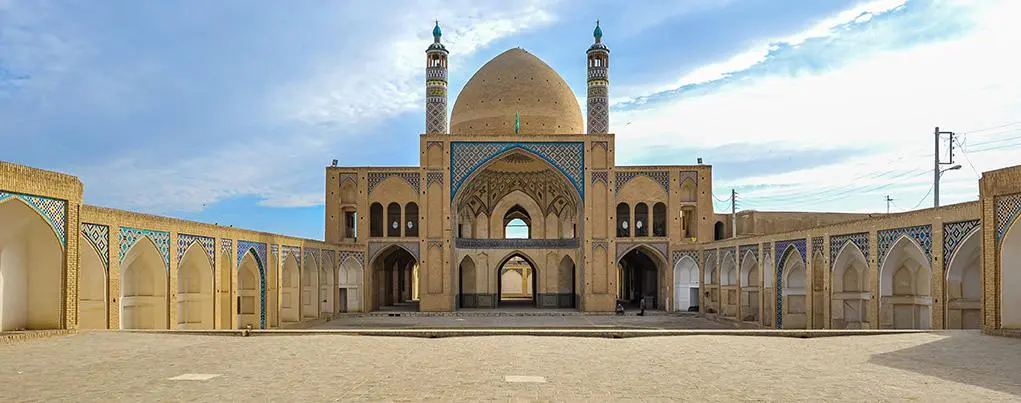
The Kashan Heritage Tour is a captivating journey through a city steeped in history, culture, and architectural marvels. Kashan, located in central Iran, is renowned for its well-preserved traditional houses, lush gardens, and rich cultural heritage. The tour offers travelers a glimpse into the enchanting world of Persian art, craftsmanship, and hospitality.
The tour begins with a visit to the Tabatabaei House, a stunning example of Persian residential architecture from the 19th century. This historical mansion features intricate stucco work, colorful tile motifs, and elegant courtyards, reflecting the opulence and aesthetic sensibilities of the Qajar era.
Next on the itinerary is the Borujerdi House, another exquisite mansion renowned for its architectural beauty and historical significance. Visitors can admire the intricate wooden ceilings, stained glass windows, and fine craftsmanship that characterize this well-preserved heritage site.
A highlight of the Kashan Heritage Tour is the visit to the UNESCO-listed Fin Garden (Bagh-e Fin), a historic Persian garden dating back to the Safavid era. Known for its ancient cypress trees, flowing water channels, and picturesque pavilions, Fin Garden is a serene oasis that has inspired poets, artists, and travelers for centuries.
The tour also includes exploration of the ancient village of Abyaneh, nestled in the foothills of the Karkas Mountains. This UNESCO-recognized village is famed for its red mud-brick houses, traditional clothing, and preserved cultural traditions, offering a unique glimpse into rural life in Iran.
Throughout the Kashan Heritage Tour, travelers have the opportunity to engage with local artisans, visit traditional workshops, and discover the art of Persian handicrafts such as carpet weaving, pottery, and tile-making. The tour also delves into Kashan’s rich history, from its role as a prominent center of trade along the Silk Road to its contributions to Persian literature, art, and architecture.
By immersing themselves in Kashan’s heritage, visitors gain a deeper appreciation for Iran’s cultural legacy and the enduring beauty of its historical sites. The Kashan Heritage Tour promises an unforgettable experience filled with architectural wonders, cultural insights, and moments of tranquility amidst ancient gardens and timeless craftsmanship.
Overview of Kashan’s Traditional Houses, Gardens, and Historical Sites:
Kashan, a city nestled in the heart of Iran’s central desert region, is a treasure trove of traditional architecture, lush gardens, and rich history. Renowned for its well-preserved traditional houses, known as “khaneh-ha-ye sonnati,” Kashan offers visitors a glimpse into the elegant lifestyle of Persian aristocracy. These historical houses feature intricate stucco work, colorful tile motifs, and serene courtyards adorned with fountains and gardens, showcasing the artistry and craftsmanship of the Qajar and Safavid eras.
One of Kashan’s defining features is its ancient gardens, such as the UNESCO-listed Fin Garden (Bagh-e Fin), a masterpiece of Persian garden design. With its ancient cypress trees, flowing water channels, and picturesque pavilions, Fin Garden is a tranquil oasis that has inspired poets, artists, and travelers for centuries.
In addition to its traditional houses and gardens, Kashan boasts a wealth of historical sites, including mosques, caravanserais, and bathhouses, each bearing testimony to the city’s rich cultural heritage and strategic importance along the ancient Silk Road.
Visits to Tabatabaei House, Borujerdi House, and Fin Garden (a UNESCO Site):
The Kashan Heritage Tour offers an immersive experience through some of the city’s most iconic landmarks. The tour begins with a visit to the Tabatabaei House, a masterpiece of Persian residential architecture from the 19th century. This historical mansion mesmerizes visitors with its intricate stucco work, colorful tile designs, and elegant courtyards, providing a glimpse into the opulent lifestyle of Kashan’s affluent residents during the Qajar era.
Next on the itinerary is the Borujerdi House, another architectural gem renowned for its exquisite beauty and historical significance. Visitors can marvel at the intricate wooden ceilings, stained glass windows, and fine craftsmanship that characterize this well-preserved heritage site.
A highlight of the tour is the UNESCO-listed Fin Garden, a historic Persian garden dating back to the Safavid era. With its ancient trees, water features, and serene ambiance, Fin Garden captivates visitors with its timeless beauty and cultural significance.
Exploration of the Ancient Village of Abyaneh and Its Cultural Significance:
The Kashan Heritage Tour includes a visit to the ancient village of Abyaneh, located in the foothills of the Karkas Mountains. This UNESCO-recognized village is famed for its red mud-brick houses, traditional clothing, and preserved cultural traditions that date back centuries. Abyaneh offers a unique glimpse into rural life in Iran, with its narrow alleys, ancient architecture, and warm hospitality from its residents.
Exploring Abyaneh allows travelers to immerse themselves in Iran’s cultural heritage, witnessing firsthand the customs, crafts, and rituals that have been passed down through generations. The village’s distinct red hue, derived from local clay, adds to its picturesque charm and cultural significance, making it a must-visit destination on the Kashan Heritage Tour.
Kerman Archaeological Tour
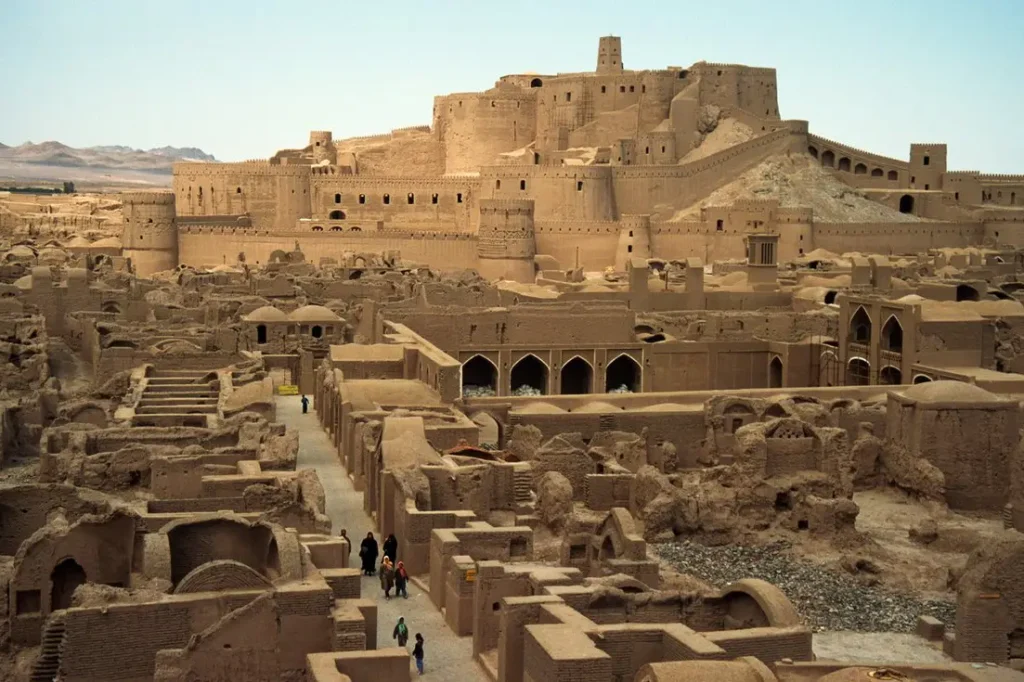
The Kerman Archaeological Tour is an immersive journey through the ancient wonders and historical treasures of one of Iran’s oldest cities. Kerman, located in southeastern Iran, is steeped in history, boasting a rich tapestry of archaeological sites, cultural heritage, and architectural marvels that date back thousands of years.
The tour begins with a visit to the Ganjali Khan Complex, a magnificent ensemble of buildings constructed during the Safavid era. This complex includes a bathhouse (hammam), a caravanserai, a mosque, a bazaar, and a school, showcasing the architectural splendor and functional design that characterized Safavid urban planning.
Next on the itinerary is the historic Arg-e Bam, a UNESCO World Heritage site and one of the largest adobe structures in the world. The ancient citadel of Bam, dating back over 2,000 years, offers insights into the region’s strategic importance along the Silk Road and its unique architectural techniques used in constructing mud-brick fortifications.
The tour also includes a visit to the Rayen Citadel, often referred to as the “miniature Bam,” due to its resemblance to the larger citadel. Rayen Citadel is renowned for its well-preserved architecture, labyrinthine alleys, and panoramic views of the surrounding desert landscape, providing a glimpse into life in a medieval Persian fortress.
A highlight of the Kerman Archaeological Tour is the Shahdad Desert, home to the enigmatic Shahdad Kaluts, a unique geological phenomenon featuring towering sandstone formations sculpted by wind and time. These surreal landscapes, often likened to a Martian terrain, offer photographers, geologists, and adventurers a captivating experience in the heart of the desert.
Additionally, the tour may include visits to historical sites such as the Jameh Mosque of Kerman, the Malek Mosque, and the Gonbad-e Jabaliye, a 1,000-year-old brick tower with intricate geometric patterns.
Throughout the Kerman Archaeological Tour, knowledgeable guides provide insights into the region’s history, archaeology, and cultural heritage, allowing travelers to unravel the mysteries of ancient civilizations, explore hidden gems, and appreciate the enduring legacy of Kerman’s archaeological wonders.
Introduction to Kerman’s Archaeological Sites and Historical Landmarks:
Kerman, situated in the southeastern region of Iran, is a city steeped in archaeological richness and historical significance. Its strategic location along ancient trade routes has endowed Kerman with a wealth of cultural heritage, from well-preserved historical landmarks to breathtaking natural formations. The city’s archaeological sites offer a fascinating journey through time, unraveling the mysteries of ancient civilizations that once thrived in this region.
Visit to Ganjali Khan Complex, Jameh Mosque of Kerman, and Shahdad Desert:
The Kerman Archaeological Tour commences with a visit to the Ganjali Khan Complex, a masterpiece of Safavid-era architecture. This historic complex includes a bathhouse (hammam), a caravanserai, a mosque, a bazaar, and a school, showcasing the grandeur and functional design of Safavid urban planning. Visitors can immerse themselves in the rich history and cultural heritage of Kerman while exploring the intricate details of the complex.
Next on the itinerary is the Jameh Mosque of Kerman, an architectural gem dating back to the 14th century. This mosque, with its stunning tilework, exquisite calligraphy, and elegant minarets, is a testament to Kerman’s Islamic heritage and artistic achievements. The tranquil ambiance of the mosque’s courtyard provides a serene setting for contemplation and appreciation of Persian architectural ingenuity.
The tour also includes a journey to the Shahdad Desert, home to the mesmerizing Shahdad Kaluts, unique sand formations sculpted by wind erosion over millennia. These otherworldly landscapes, often likened to a lunar or Martian terrain, offer a surreal and captivating experience for travelers. The vast expanse of the desert, punctuated by towering sandstone pillars and rippling dunes, provides a dramatic backdrop for photography, exploration, and appreciation of nature’s artistry.
Exploration of Unique Kaluts (Sand Formations) in the Shahdad Desert:
The highlight of the Kerman Archaeological Tour is the exploration of the unique Kaluts in the Shahdad Desert. These natural wonders, characterized by their intricate shapes, sharp ridges, and mesmerizing textures, are a testament to the forces of nature and the passage of time. Travelers have the opportunity to wander among the Kaluts, marveling at their sheer size and surreal beauty, while gaining insights into the geological processes that shaped these extraordinary formations.
The Shahdad Desert’s Kaluts offer a glimpse into the Earth’s geological history and serve as a reminder of the planet’s remarkable diversity and natural wonders. The experience of exploring these unique sand formations adds a sense of adventure, wonder, and discovery to the Kerman Archaeological Tour, leaving travelers with lasting memories of this captivating region.
Tabriz Historical Tour
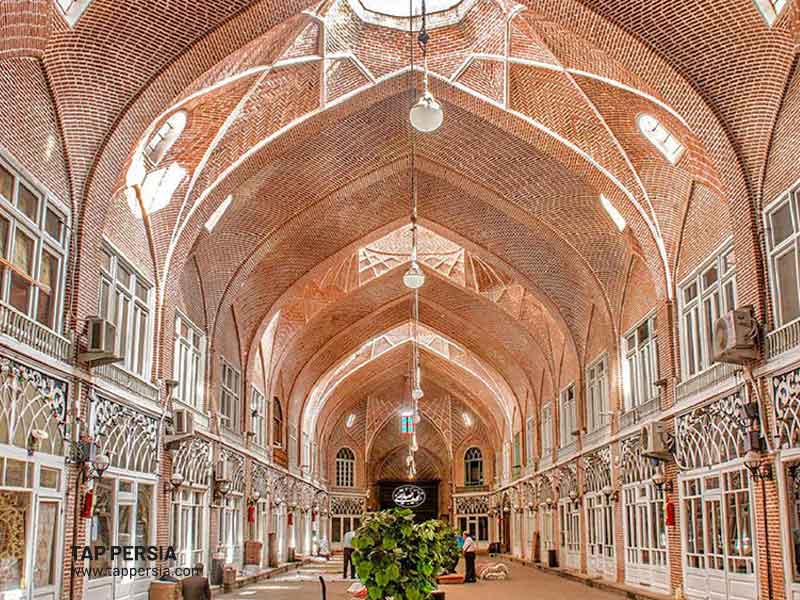
The Tabriz Historical Tour is a captivating journey through the cultural, historical, and architectural wonders of one of Iran’s oldest and most significant cities. Tabriz, located in the northwest of Iran, has been a major center of trade, culture, and civilization for centuries, making it a treasure trove of historical landmarks, traditional bazaars, and cultural heritage.
The tour begins with a visit to the Tabriz Historic Bazaar Complex, a UNESCO World Heritage site and one of the oldest and largest covered bazaars in the world. This labyrinthine marketplace is a vibrant hub of commerce and craftsmanship, offering a diverse array of goods, from carpets and spices to handicrafts and antiques. The bazaar’s intricate architecture, vaulted ceilings, and bustling atmosphere provide a fascinating glimpse into Tabriz’s commercial history and cultural diversity.
Next on the itinerary is the Arg of Tabriz, an ancient citadel dating back to the Ilkhanid period. The citadel’s imposing walls, towers, and gateways stand as a testament to Tabriz’s strategic importance throughout history. Visitors can explore the citadel’s inner chambers, archaeological remains, and panoramic views of the cityscape.
The tour also includes a visit to the Blue Mosque (Kabud Mosque), an architectural gem renowned for its exquisite turquoise tiles, intricate calligraphy, and elegant dome. The mosque’s serene ambiance and historical significance as a center of worship and artistic expression offer insights into Tabriz’s Islamic heritage and artistic achievements.
A highlight of the Tabriz Historical Tour is the Tabriz Constitutional House, a historic mansion that played a pivotal role during Iran’s Constitutional Revolution. The house showcases period furniture, documents, and artifacts related to Iran’s struggle for constitutionalism, providing a glimpse into the country’s modern history and political evolution.
Additionally, the tour may encompass visits to other cultural sites in Tabriz, such as the Tabriz Museum of Natural History, El-Gölü Park with its scenic lake and gardens, and the Tabriz Carpet Museum, which showcases the artistry and craftsmanship of Persian carpet weaving.
Throughout the Tabriz Historical Tour, knowledgeable guides share insights into Tabriz’s history, art, and culture, allowing travelers to unravel the layers of this ancient city’s heritage and appreciate its enduring legacy as a cultural crossroads in the heart of Iran’s northwest region.
Description of Tabriz’s Historical Bazaar Complex and Architectural Landmarks:
The Tabriz Historical Tour immerses visitors in the vibrant tapestry of Tabriz’s cultural heritage, starting with the Tabriz Historic Bazaar Complex. This UNESCO World Heritage site stands as a testament to centuries of trade, craftsmanship, and cultural exchange. The bazaar’s intricate architecture, vaulted ceilings, and bustling alleyways offer a captivating glimpse into Tabriz’s commercial history and cultural diversity. From traditional crafts and spices to exquisite textiles and antiques, the bazaar’s labyrinthine corridors house a treasure trove of goods, creating a vibrant atmosphere that reflects Tabriz’s status as a major center of commerce and craftsmanship.
In addition to the bazaar, Tabriz boasts a wealth of architectural landmarks that showcase its rich history and artistic achievements. The Arg of Tabriz, an ancient citadel dating back to the Ilkhanid period, stands as a formidable symbol of Tabriz’s strategic importance and military prowess. Its towering walls, imposing gates, and archaeological remains provide a fascinating insight into the city’s medieval past.
Visit to Blue Mosque, Tabriz Historic Houses, and Armenian Monastic Ensembles:
The Tabriz Historical Tour continues with a visit to the Blue Mosque, also known as the Kabud Mosque, a masterpiece of Islamic architecture adorned with exquisite turquoise tiles, intricate calligraphy, and a majestic dome. This historic mosque, dating back to the 15th century, serves as a spiritual and artistic landmark, reflecting Tabriz’s Islamic heritage and artistic achievements.
Next on the itinerary are the Tabriz Historic Houses, showcasing the city’s traditional residential architecture and lifestyle. These historic mansions, such as the Tabriz Constitutional House, provide a glimpse into Tabriz’s social history, cultural traditions, and architectural elegance.
The tour also includes a visit to the Armenian Monastic Ensembles of Iran, located in the vicinity of Tabriz. These ancient monasteries, churches, and chapels are significant religious and cultural landmarks, reflecting the enduring presence of the Armenian community in Iran and their contributions to art, architecture, and spirituality.
Exploration of Tabriz’s Cultural Heritage and Significance in Iranian History:
The Tabriz Historical Tour offers a comprehensive exploration of Tabriz’s cultural heritage and its pivotal role in Iranian history. From the bustling bazaar and architectural landmarks to the religious and cultural ensembles, visitors gain insights into Tabriz’s dynamic past, cultural diversity, and contributions to Persian art, trade, and diplomacy.
Tabriz’s significance in Iranian history is underscored by its status as a historic capital, a center of craftsmanship, and a melting pot of cultures from East and West. Through guided tours, museum visits, and interactions with local artisans and experts, travelers can appreciate Tabriz’s enduring legacy as a cultural crossroads and a symbol of Iran’s rich and diverse heritage.
Mashhad Cultural Tour
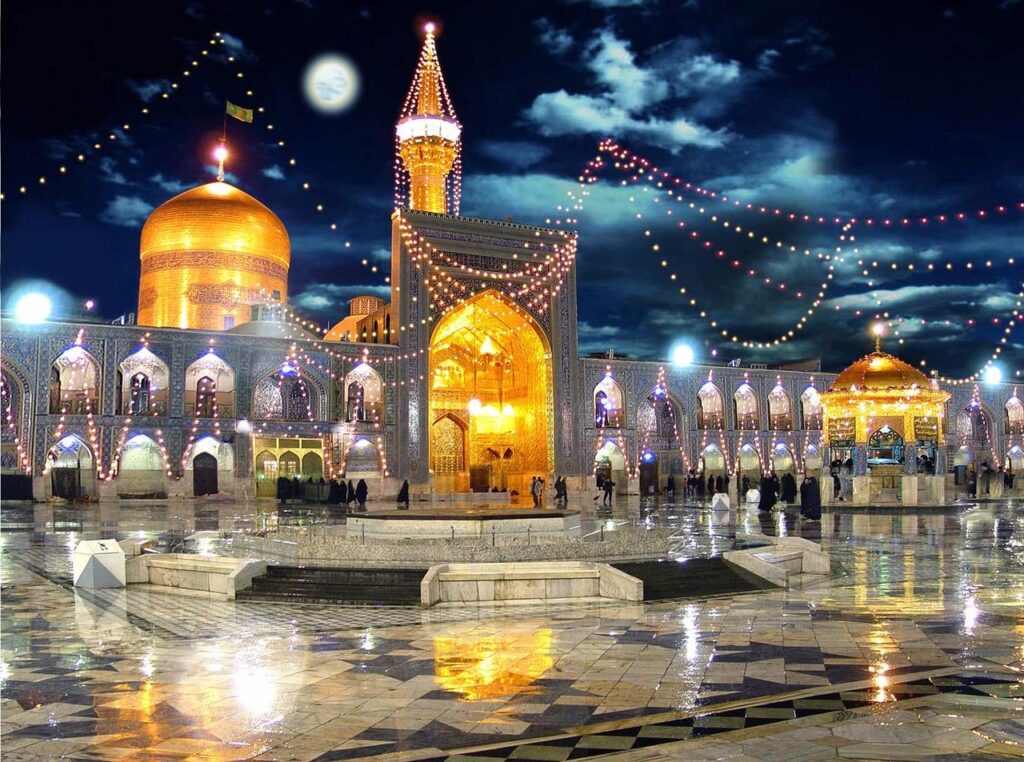
The Mashhad Cultural Tour offers a profound exploration of one of Iran’s most significant cultural and religious centers. Mashhad, located in northeastern Iran, is renowned for its rich history, stunning architecture, and spiritual significance as the burial place of Imam Reza, the eighth Shia Imam. The city’s cultural heritage, artistic treasures, and vibrant atmosphere make it a captivating destination for travelers seeking to delve into Iran’s cultural tapestry.
The tour begins with a visit to the Holy Shrine of Imam Reza, a sacred pilgrimage site revered by Shia Muslims worldwide. The shrine complex is a masterpiece of Islamic architecture, featuring intricately decorated domes, minarets, courtyards, and prayer halls adorned with exquisite tilework, calligraphy, and fine art. Visitors can immerse themselves in the spiritual ambiance of the shrine, witness religious rituals, and marvel at the architectural splendor that reflects centuries of devotion and craftsmanship.
Next on the itinerary is the Goharshad Mosque, an architectural gem adjacent to the Imam Reza Shrine. This historic mosque, built during the Timurid era, is renowned for its stunning tilework, colorful mosaics, and majestic domes. The mosque’s elegant design and historical significance as a center of worship and learning offer insights into Mashhad’s Islamic heritage and cultural contributions.
The tour also includes a visit to the Naderi Museum, dedicated to the life and legacy of Nader Shah, one of Iran’s most influential rulers. The museum showcases artifacts, paintings, and historical exhibits related to Nader Shah’s military campaigns, governance, and cultural patronage, providing a deeper understanding of Iran’s imperial history.
Additionally, the Mashhad Cultural Tour explores the city’s vibrant cultural scene through visits to traditional bazaars, such as the Reza Bazaar, where travelers can experience the hustle and bustle of daily life, shop for souvenirs, and sample local cuisine.
The tour may also encompass visits to cultural landmarks like the Ferdowsi Tomb, honoring the renowned Persian poet Ferdowsi, and the Tomb of Khajeh Rabi, a revered Sufi mystic. These sites offer glimpses into Iran’s literary and spiritual heritage, adding layers of cultural richness to the tour.
Throughout the Mashhad Cultural Tour, knowledgeable guides provide historical context, religious insights, and cultural anecdotes, allowing travelers to gain a deeper appreciation of Mashhad’s significance as a cultural crossroads and a center of spirituality in Iran.
Overview of Mashhad as a Religious and Cultural Center:
Mashhad, nestled in northeastern Iran, stands as a beacon of religious devotion and cultural richness. Revered as one of the holiest cities in Shia Islam, Mashhad is renowned for housing the sacred shrine of Imam Reza, the eighth Imam of Shia Muslims. Beyond its religious significance, Mashhad boasts a vibrant cultural scene, with architectural marvels, historical sites, and artistic treasures that reflect centuries of spiritual devotion, scholarly pursuits, and artistic achievements.
Visit to Imam Reza Shrine, Nader Shah Museum, and Kooh Sangi Park:
The Mashhad Cultural Tour commences with a visit to the Holy Shrine of Imam Reza, a monumental complex that draws millions of pilgrims each year. The shrine’s exquisite architecture, intricate tilework, and spiritual ambiance create a profound atmosphere for visitors to pay their respects, witness religious rituals, and immerse themselves in the spiritual legacy of Imam Reza.
Next on the itinerary is the Nader Shah Museum, dedicated to the legacy of Nader Shah, a prominent figure in Iran’s history. The museum showcases artifacts, paintings, and historical exhibits related to Nader Shah’s military campaigns, governance, and cultural patronage, offering insights into Iran’s imperial past and the impact of Nader Shah’s rule.
The tour also includes a visit to Kooh Sangi Park, a scenic retreat nestled at the foothills of the Binalood Mountains. The park’s lush greenery, serene ponds, and recreational facilities provide a refreshing contrast to the city’s bustling streets, allowing travelers to relax, enjoy nature, and appreciate Mashhad’s natural beauty.
Exploration of Mashhad’s Cultural Attractions and Historical Sites:
The Mashhad Cultural Tour offers a comprehensive exploration of the city’s cultural attractions and historical sites, providing travelers with a deeper understanding of Mashhad’s heritage and significance. Cultural highlights may include visits to traditional bazaars, such as the Reza Bazaar, where visitors can experience the vibrant atmosphere of commerce, sample local cuisine, and purchase souvenirs.
The tour may also encompass visits to historical landmarks such as the Ferdowsi Tomb, honoring the legendary Persian poet Ferdowsi, and the Tomb of Khajeh Rabi, a revered Sufi mystic. These sites offer insights into Iran’s literary and spiritual heritage, adding layers of cultural richness to the tour.
Throughout the Mashhad Cultural Tour, knowledgeable guides share historical anecdotes, religious insights, and cultural context, allowing travelers to gain a deeper appreciation of Mashhad’s role as a cultural crossroads, a center of spirituality, and a custodian of Iran’s cultural heritage.
Kermanshah Ancient Tour
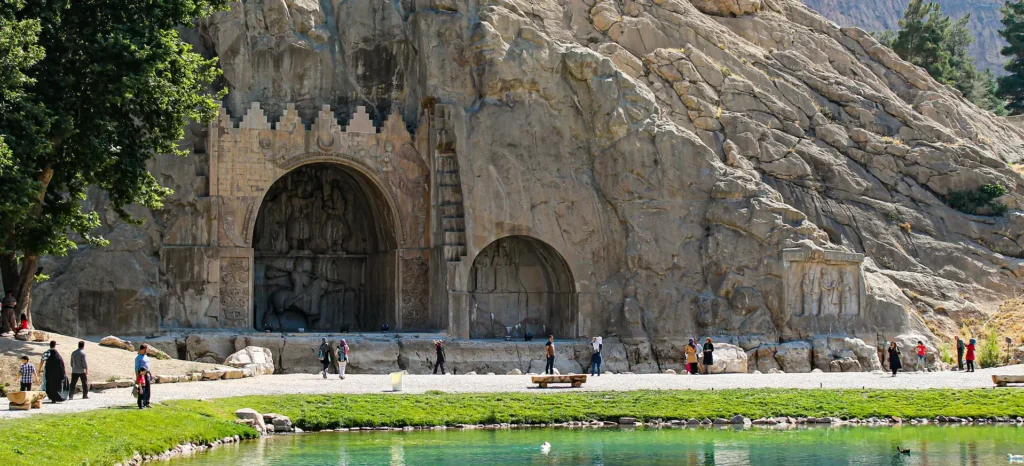
The Kermanshah Ancient Tour offers a fascinating journey through the rich history, archaeological wonders, and cultural heritage of Kermanshah, a city located in western Iran. Known for its ancient sites, historical landmarks, and cultural significance, Kermanshah provides a captivating glimpse into Iran’s ancient civilizations and historical legacy.
The tour begins with a visit to the Taq-e Bostan complex, an archaeological site renowned for its rock reliefs dating back to the Sassanian Empire. The magnificent reliefs depict royal scenes, hunting expeditions, and coronation ceremonies, showcasing the artistic and cultural achievements of ancient Persia.
Next on the itinerary is the Bisotun Inscription, a UNESCO World Heritage site that bears inscriptions and reliefs from various periods of Iranian history, including the Achaemenid, Parthian, and Sassanian empires. The Bisotun Inscription provides valuable insights into ancient languages, scripts, and historical events, making it a significant archaeological and historical site in Iran.
The tour also includes a visit to the Anahita Temple, dedicated to the ancient Persian goddess of water and fertility. The temple’s ruins and architectural remnants offer a glimpse into the religious beliefs and practices of ancient Persians, highlighting the region’s cultural and spiritual heritage.
Additionally, the Kermanshah Ancient Tour explores the historical city of Kangavar, home to the Anahita Temple Complex, a significant religious site dedicated to the goddess Anahita. The temple complex includes a central temple, courtyards, and columns, reflecting the architectural styles of ancient Persia.
The tour may also encompass visits to other cultural and historical sites in Kermanshah, such as the Tekyeh Moaven al-Molk, a traditional Iranian structure used for religious and cultural gatherings, and the Kermanshah Museum, which houses artifacts, artworks, and archaeological finds from the region’s history.
Throughout the Kermanshah Ancient Tour, knowledgeable guides provide historical context, archaeological insights, and cultural anecdotes, allowing travelers to delve into the mysteries of ancient Persia, appreciate the region’s cultural diversity, and gain a deeper understanding of Iran’s rich historical tapestry.
Introduction to Kermanshah’s Ancient Heritage and Archaeological Sites:
Kermanshah, situated in western Iran, is steeped in ancient heritage and boasts a treasure trove of archaeological sites that offer a fascinating glimpse into Iran’s historical legacy. The region is renowned for its rich cultural tapestry, spanning Persian, Parthian, and Sassanian civilizations, making it a captivating destination for history enthusiasts and cultural explorers alike.
Visit to Bisotun Inscription, Taq-e Bostan Rock Reliefs, and Historical Landmarks:
The Kermanshah Ancient Tour begins with a visit to the Bisotun Inscription, a UNESCO World Heritage site that showcases inscriptions and reliefs from different periods of Iranian history, including the Achaemenid, Parthian, and Sassanian eras. The Bisotun Inscription, carved on a rock face, provides valuable insights into ancient languages, scripts, and historical events, making it a significant archaeological and historical site in Iran.
Next on the itinerary is the Taq-e Bostan complex, renowned for its stunning rock reliefs dating back to the Sassanian Empire. The intricate reliefs depict royal scenes, hunting expeditions, and coronation ceremonies, showcasing the artistic prowess and cultural achievements of ancient Persia. Visitors can marvel at the detailed craftsmanship and historical narratives depicted in the rock reliefs, offering a vivid window into Sassanian society.
The tour also includes visits to other historical landmarks in Kermanshah, such as the Anahita Temple, dedicated to the ancient Persian goddess of water and fertility. The temple’s ruins and architectural remnants provide insights into ancient religious beliefs and practices, highlighting the region’s cultural and spiritual heritage.
Exploration of Persian, Parthian, and Sassanian Heritage Around Kermanshah:
The Kermanshah Ancient Tour offers an immersive exploration of the region’s diverse heritage, spanning Persian, Parthian, and Sassanian civilizations. Travelers can delve into the legacy of ancient Persia through visits to archaeological sites, museums, and historical landmarks that showcase the region’s rich history and cultural contributions.
Exploring the Persian, Parthian, and Sassanian heritage around Kermanshah allows visitors to gain a deeper understanding of Iran’s ancient civilizations, their artistry, governance, and societal structures. Knowledgeable guides provide historical context, archaeological insights, and cultural anecdotes, creating a rewarding experience for travelers keen on unraveling the mysteries of Iran’s past and appreciating its enduring cultural heritage.
Conclusion
Exploring Iran through historical tours unveils a tapestry woven with rich cultural heritage, ancient civilizations, and architectural marvels. From the majestic ruins of Persepolis and Pasargadae to the bustling bazaars of Tabriz and the serene gardens of Isfahan, each destination offers a unique glimpse into Iran’s past and present. The historical tours in Iran take travelers on a journey through time, showcasing the country’s diverse influences, from the ancient Persian empires to the Islamic golden age and beyond. Visiting sites like the Imam Reza Shrine in Mashhad, the Taq-e Bostan rock reliefs in Kermanshah, and the Golestan Palace in Tehran allows for a deeper understanding of Iran’s cultural, religious, and historical significance.
These tours not only educate and enlighten but also inspire awe and appreciation for Iran’s enduring legacy. They highlight the country’s contributions to art, architecture, literature, and spirituality, inviting travelers to immerse themselves in a world of ancient wonders and timeless beauty. Whether exploring the ancient city of Yazd with its mud-brick architecture or marveling at the cosmopolitan vibe of Tehran’s historical sites, each tour unveils a chapter of Iran’s captivating narrative. Through guided experiences, cultural encounters, and architectural wonders, historical tours in Iran leave a lasting impression, fostering a deeper connection with the country’s past and present, and sparking a sense of wonder and curiosity about its future.
Read more Historical Tours in Turkey
